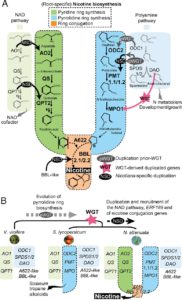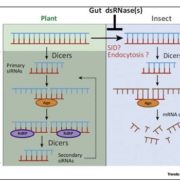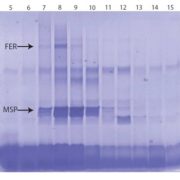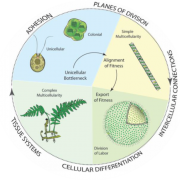Wild tobacco genomes reveal the evolution of nicotine biosynthesis
 The genus Nicotiana encompasses several species and hybrids, the most famous being Nicotiana tabacum, cultivated for production of tobacco. Xu et al. sequenced the genome of Nicotiana attenuata and Nicotiana obtusifolia with an interest in identifying the origins of nicotine biosynthesis. Nicotine is a toxic alkaloid produced to protect against herbivory, but also the addictive compound in tobacco products. Analysis of these genomes revealed that nicotine synthesis evolved in Nicotiana from duplication in the polyamine and nicotinamide adenine dinucleotide pathways, as well as proliferation of transposable elements. Proc. Natl. Acad. Sci. USA 10.1073/pnas.1700073114
The genus Nicotiana encompasses several species and hybrids, the most famous being Nicotiana tabacum, cultivated for production of tobacco. Xu et al. sequenced the genome of Nicotiana attenuata and Nicotiana obtusifolia with an interest in identifying the origins of nicotine biosynthesis. Nicotine is a toxic alkaloid produced to protect against herbivory, but also the addictive compound in tobacco products. Analysis of these genomes revealed that nicotine synthesis evolved in Nicotiana from duplication in the polyamine and nicotinamide adenine dinucleotide pathways, as well as proliferation of transposable elements. Proc. Natl. Acad. Sci. USA 10.1073/pnas.1700073114










Leave a Reply
Want to join the discussion?Feel free to contribute!